11016 A VERY RARE NEO-CLASSICAL RETAIL COMPTOIR FROM A PARISIAN MARCHAND DE VIN French. Early Nineteenth Century. Measurements: Height: 35 1/2” (90 cm) Width: 74” (188 cm) Depth: 23 1/2” (60 cm)

-
Figure 1
-
Figure 2
-
Figure 3
Research
A large retail counter of pine and composition, the replaced top of striated limestone. A frieze around the top of three sides, decorated with foliage and buds with a central sunflower. The front is separated into three areas by four pilasters of an unusual classical order, with two further pilasters framing the end panels, the back with central kneehole flanked by two banks of four drawers. The central panel is the largest and contains two seated female figures of composition, the two flanking panels both with large volute krater vases containing floral arrangements. Painted decoration includes geometrical patterning on central and end panels. The reverse side painted green with two banks of drawers on either side of a central kneehole. One drawer rebuilt. Tests indicate one previous paint layer, the existing one probably completed close to the time of manufacture.
Provenance:
A Private Collection, Paris
By repute, a shop in the Carrefour de la Croix Rouge, Paris
The tumult of the French Revolution saw much of Paris’ highly reputed luxury goods trade seriously damaged. However, on being crowned Emperor in December 1804, Napoleon set about reversing this process, in the same year introducing the wide-reaching legal reforms known as the Code Napoléon. In 1807 a specific Code de Commerce was issued to regulate the conduct of business and trade in France. This new legal framework, along with the improved economic climate of the period, helped the city regain its position as the leading center for the retail of luxury goods in the world. Development was furthered by the Emperor’s reconstruction of large areas of Paris, which included several commercial districts, adding new and improved lighting, paving, and space for traffic.
Napoleon himself is recorded as saying he wanted his capital’s retail sector to become “quelque chose de fabuleaux, de colossal, d’inconnu jusqu’à nos jours” (“something fabulous, colossal, unknown until our time”).1 The present piece, a comptoir, or retail counter, is a remarkable survival from this period, when many of the conventions in the modern retail environment we would recognize today were first developed. That this period was a golden age in the history of the Paris boutique is reflected in publications such as Collection des maisons de commerce de Paris les mieux décorées, a series of prints published over a 22-year period from 1806 to 1828, many of which show the inventiveness and skill that went into creating retail spaces at this time, including the extensive use of fine decorative painting with bronze and gilt fittings, with designs often derived from antiquity. Interestingly, the façade of the textile merchant Gay Frères was closely related to the present piece, in being decorated with pilasters and capitals, and with seated female figures dressed in classical robes, bearing symbolic attributes of Roman deities (figure 1).
The iconography of the present counter’s front repeatedly references Dionysus, the ancient Greek god of wine, associating it with a high-class Parisian Marchand de Vin. The central scene evokes the Nurturing of Dionysus, an ideal subject to decorate a wine seller’s interior. According to the classical Roman text the Hygenus Fabulae, Dionysus was the son of Zeus with Semele, a mortal priestess.2 On the birth, to avoid his son’s destruction by his jealous wife Hera, Zeus transformed the young Dionysus into a ram and entrusted him to the nymphs of Mount Nysa, who brought him up safely in a cave. Subsequently, the ram became closely associated with Dionysus and was the animal most often sacrificed to him. This was a popular subject in French art; it had been painted by Nicolas Poussin in the seventeenth century and by François Boucher in 1769.3
The female figures on the comptoir are both draped in Roman togas and are seated, one on a klismos chair, with outwardly curving legs derived from antique vase paintings, the other on a sella curulis, or curule seat, upon which senior magistrates holding imperium were entitled to sit during the Roman Republic. At either end of the frontage are two volute krater vases, a name that in ancient Greek means the same as “to mix,” referring to their use for the mixing of wine and water. Their necks are encircled with ivy, being the plant used for Dionysus’ wreath, and their bodies decorated with leopards, which pulled his chariot. The scene on the counter hints that the clientele of the merchant who commissioned this piece was sophisticated and discerning, with an understanding of classical mythology and symbolism.
The sale of wine in Paris was an enormously important trade. A sales counter such as the present piece lay at the end of a complex and lengthy supply chain. Most of the wine on sale in the Paris area came from around Orléans, the Rhone Valley and Burgundy; hardly any came from Bordeaux, which largely supplied Britain.4 By 1789 there were already 3,000 establishments where one could buy drink in Paris5 and the guild of wine sellers was the fifth largest in the city.6
By this time most wine sellers sold both wine for consumption on the premises, and à pot, that is, to be taken away for consumption at home. In both cases the counter was at the center of the operation. Some inventories from the early eighteenth century give us some idea of the lay-out of a classic Parisian caberet as such drinking establishments were known at the time.7These would typically include two rooms downstairs and two upstairs, with the counter located in the downstairs front room. Often there would be indoor fountains for the washing of wine glasses. Adjacent to the counter would be stored the glasses and the utensils used for measuring out the wine. A few images of eighteenth century caberets survive in the Cabinet des Estampes in Paris, including one that shows the owner standing behind a simple counter, surrounded by his weights and measures. Interestingly, Dionysian imagery is also present on the sculptural overdoor (figure 2).8
It seems that comptoirs in other trades were also often subject to elaborate decoration; Le Grand Café Parisian is recorded in the 1850s as having a monumental one carved in oak, decorated with four female figures representing the four cities in France best known for their beer: Paris, Lyon, Lille and Strasbourg.9 An illustration of a bakery in the Quartier de la Bourse from 1873 again demonstrates the intricacy of such shops with their beautifully decorated counters, much like the present piece, at their centers (figure 3).
The present example was formerly used as a side table in a Parisian apartment on the Rue Jacob from 1960 and is said to have been purchased after the war from a shop in the Carrefour de la Croix Rouge in the 6th arrondissement of Paris.
Footnotes:
1. J. Chamarat, Paris: Boutiques D’hier: [exposition Réalisée Par La Réunion Des Musées Nationaux Et Le Musée National Des Arts Et Traditions Populaires,] Musée Des Arts Et Traditions Populaires, [Paris,] 16 Mai-17 Oct. 1977, (Paris: Ministr̀e de la Culture et de l’Environnement, 1977) 29.
2. See Hygenus Fabulae, 182.
3. Nicolas Poussin, The Nurture of Bacchus, c. 1623, The National Gallery London, N39; François Boucher, Mercury Confiding the Infant Bacchus to the Nymphs of Nysa, 1769, Kimbell Art Museum, AP 1972. 07
4. Thomas Edward Brennan, Public Drinking and Popular Culture in Eighteenth-Century Paris, (Princeton, N.J: Princeton University Press, 1988) 94.
5. W. Scott Haine, The World of the Paris Café, (Baltimore: Johns Hopkins University Press, 1998) 3.
6. Brennan, op. cit., p. 76
7. Ibid., 116
8. Bibliothèque nationale de France; Rue des Archives, Image no. RDA00106773
9. Bihl-Willette, Luc. Des tavernes aux bistrots: histoire des cafés. Lausanne: L’Age d’Homme, 1997. 122.
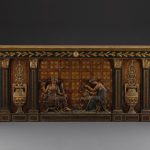
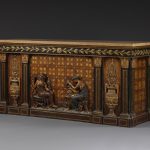
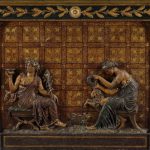
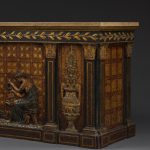
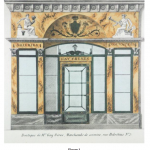

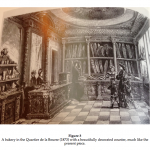
Comments are closed.